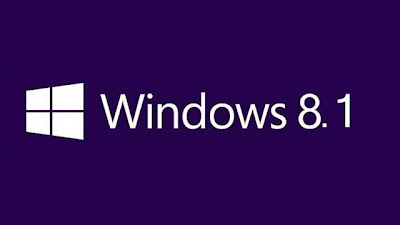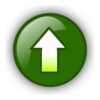Software overview:
From Facebook to the full-featured Mail app and modern Outlook to a "peek" bar in the modern version of Internet Explorer 11 to the new Windows Scan app to the new Bing logo, you now get nearly all of the promised Windows 8.1 extras.
We are still waiting for the touch versions of the Office apps and the web playlist tool in the Music app, but that's the way things work in Microsoft's new "continuous development" world. And of course you get the interface changes and SkyDrive integration we saw in the Windows 8.1 Preview.
SkyDrive is built in to sync files - on both Windows 8.1 and Windows 8.1 RT - as well as settings and the layout for your Start screen and desktop taskbar.
But Microsoft's second bite at the convergence of PCs and tablets doesn't back away from what we still want to call Metro; in fact there are more built in modern apps than in Windows 8, more settings you can change without jumping to the desktop and more options for how you place modern apps on screen.
The question is how well these two worlds sit together, and how much of an improvement Microsoft has been able to deliver in a year.
If you already have Windows 8, upgrading to Windows 8.1 is very simple. It will be the first app you see every time you open the Windows Store and the installation happens very quickly.
You don't have to reinstall your desktop applications or your Windows Store apps, and all your files are still there (as are libraries and the icons pinned to your taskbar.
Windows 8.1Update Windows 8.1 Preview to RTM and you get your Start screen layout but you have to click the tiles to install apps
If you sign in with a Microsoft account you haven't used before, you might have to use a code that Microsoft emails or texts to you (if you've set that up in the past) to confirm it's you; that works like trusting a PC in Windows 8 but you don't have to do it as a separate step.
If you have Windows 7 (or earlier versions), you have to install Windows 8 (the same process as when Windows 8 first came out) and then upgrade to Windows 8.1.
If you've been trying the Windows 8.1 Preview, you can't upgrade directly to the RTM version (which Microsoft warned people about all along).
If you've already upgraded another PC using the same Microsoft account you'll see tiles for the Windows Store apps you have installed on that other PC (marked with a little download icon) and you can tap on the tiles to install them.
Once you've got into the Windows 8 and 8.1 world, upgrades become almost seamless (previews aside). You just have to get there.
Download links:
Download windows 8.1 enterprise version 64 bit free download:
Part1:
Part2:
Mirror links:
Installing instructions:
1. Download the file above either first one with two links or second one with one.
2. Extract it you will get a ISO file.
3. Now you need to create a boot-able pen drive in order to install windows 8.1.
4. Download windows 7 USB/DVD tool from here .
5. Follow the on- screen instructions in order to make your pen drive boot-able (plug-in any pen drive greater than 4 GB size).
6. After making pen drive boot-able, restart your system and select boot from pen drive instead of boot from hard disk in boot settings(generally this option is reached by pressing F10 or F12 or any other key given to your laptop at start of computer)
7. After selecting pen drive the system restarts and computer loads files from pen drive to install windows 8.1(If it asks for keys please search on net there are many available).
9. Follow on screen instructions to install windows 8.1.
10. That's all. Enjoy windows 8.
After installing active windows 8.1 using below activator(if you don't have key which you purchased)
For activator visit here....




